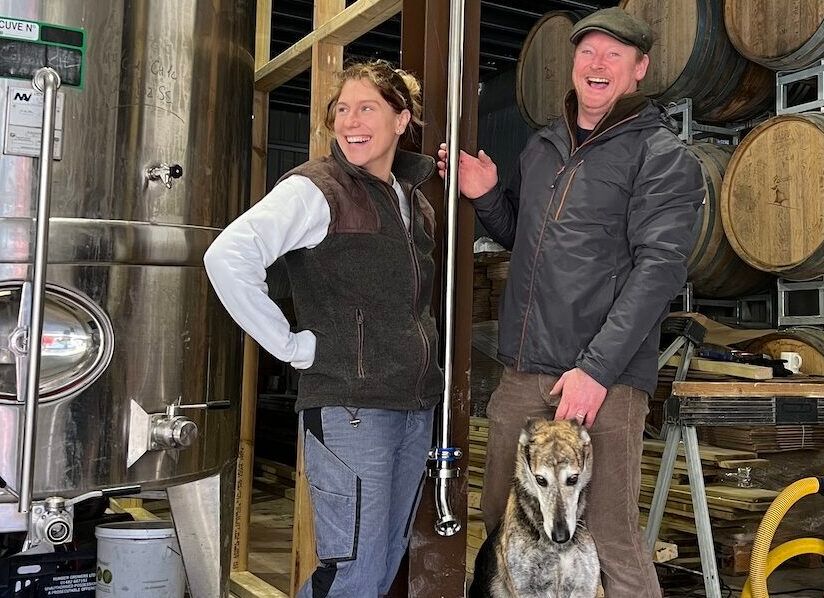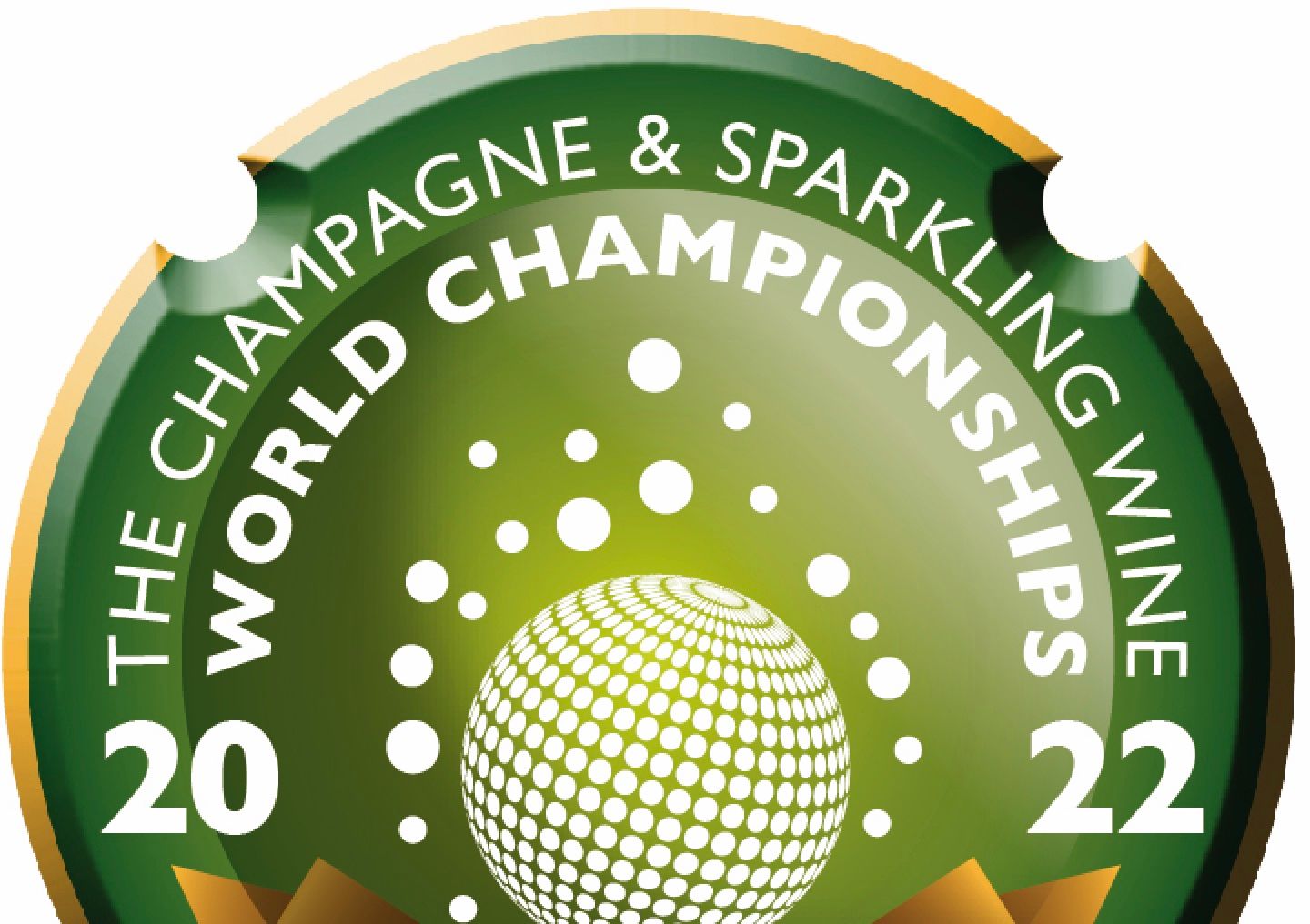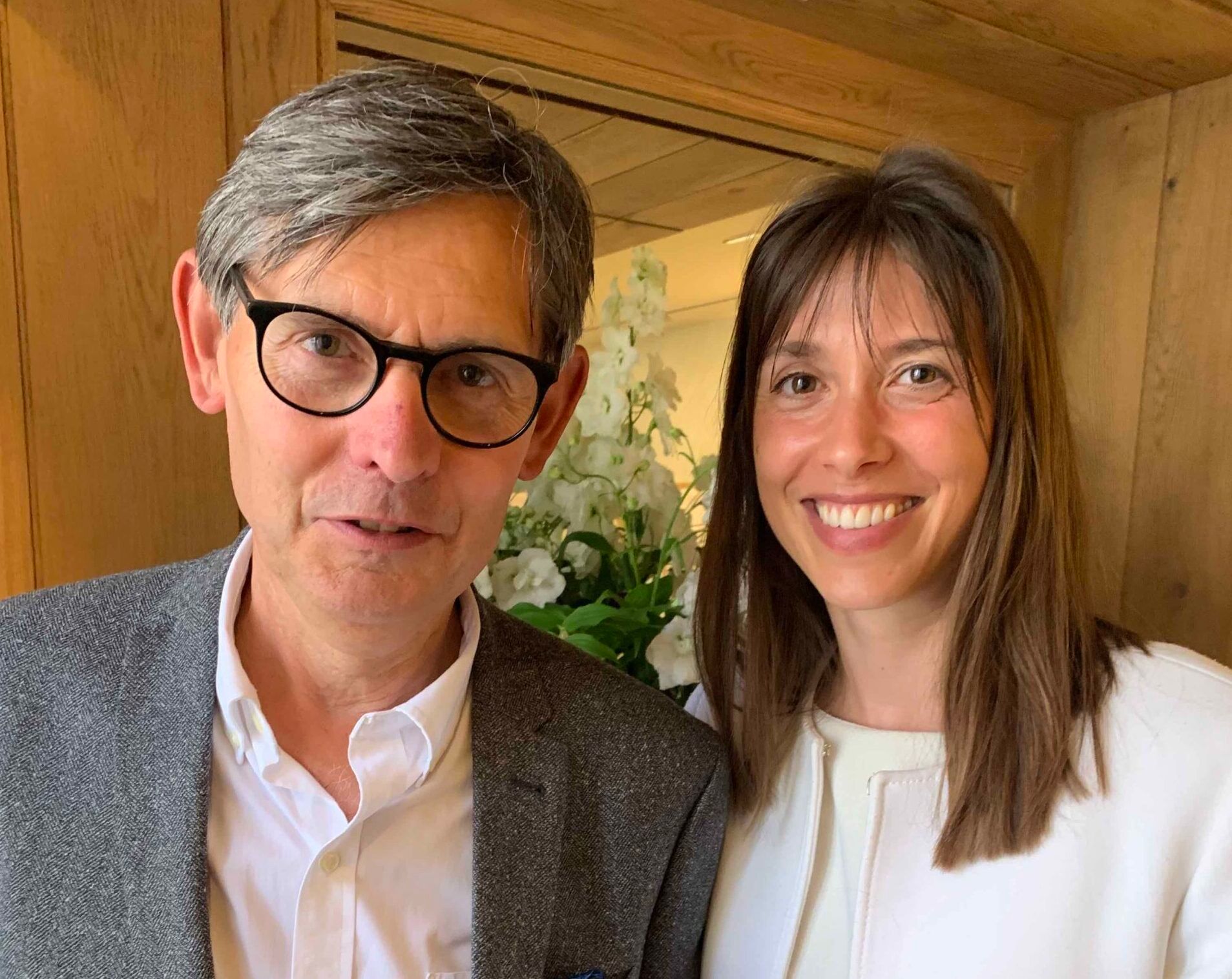Things are looking good at Laurent-Perrier. Despite being one of the top five brands in Champagne, the House is still in family ownership, with the latest face of the de Nonancourt family that of Lucie, from the fourth generation, with both her mother and aunt (Alexandra and Stéphanie) also active in the business.
The House has recently been awarded a Royal Warrant by King Charles III, its approach to viticulture having long been tilted to sustainability and having enjoyed a long-standing relationship with the then Prince of Wales at Highgrove. A good time, then, to introduce a new wine to the range.
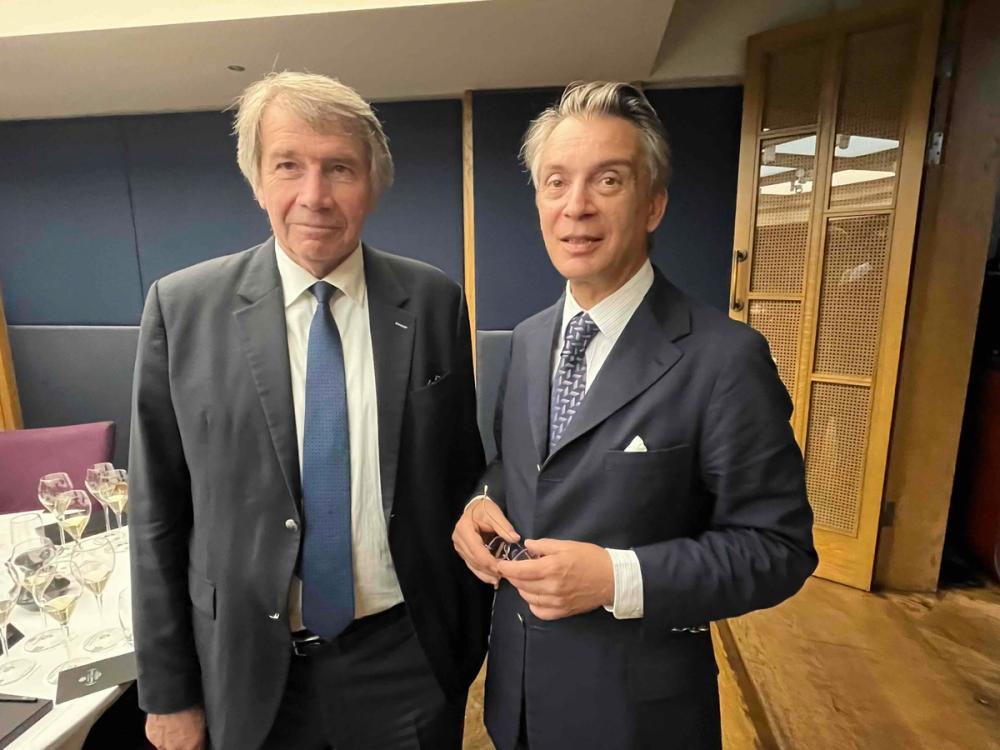
Michel Fauconnet and Stéphane Dalyac (l-r), Héritage launch, 67 Pall Mall, London, June 20, 2024
The UK presentation takes place at 67 Pall Mall in Central London and is hosted by veteran Chef de Caves, Michel Fauconnet, with the equally longstanding CEO Stéphane Dalyac also present on translation duty. He reveals at one point that Michel speaks excellent English and does not really need him to translate. This only adds to the enigma that is Michel Fauconnet.
It is perhaps worth mentioning by way of parenthesis that Laurent-Perrier has recently parted company, after a year, with its latest Chef des Caves, Maximilien Bernardeau.

The new Champagne is called Héritage and sits in the portfolio, Michel tells us, between the Non-Vintage ‘ La Cuvée’ and the deluxe ‘Grand Siècle’. This trilogy Michel separates from the rest of the range and describes as the family of wines which best show LP’s mastery of the art of blending, which, he reminds us, is, after all, the most significant attribute of great Champagne.
The other wines in the portfolio are assigned specific tasks; to show off the particularity of a vintage, say, or a dry style (the Ultra Brut was the first without dosage on the market), or of a Chardonnay style or, equally influentially, the virtues of Cuvée Rosé wine. Laurent-Perrier Cuvée Rosé has long been a standard bearer for the more robust and gastronomic end of that particular spectrum.
In terms of blending, however, we are invited to focus on the two senior wines of the abovementioned trio. The Grand Siècle was introduced in 1959 by the flamboyant Bernard de Nonancourt himself, and now celebrates its twenty sixth outing, or, to use LP parlance, its Iteration N°26. The magnums are released two to four years behind the bottles, so today we are marking the release of Iteration N°24 in Magnum alongside a new wine, Héritage, which is presented as a junior sibling to the Grand Siècle. Michel explains how the idea has been long in gestation, over a decade at least, and is intended to complement the Grand Siècle by showing off a more extensive range of reserve wines. “This new wine is all about reserve wines,” says Michel, “both Grands and Premiers Crus and sourced from a broader palette than the Grand Siècle itself, and also less precise in its stipulations.”
What does he mean by this? Well, the key to understanding Grand Siècle itself lies in the adherence to Bernard de Nonancourt’s initial requirements, which he set out to ensure that the wine would be both approachable and age-worthy, not always the easiest thing to achieve. Bernard’s vision dictated that each wine was to showcase the merits of three complementary vintages, with a tension between freshness and the complexity earned by maturity thereby ensured.
In addition, the wine should only be sourced from up to 11 of the key Grand Cru villages in the Montagne de Reims and the Côte des Blancs; it should be made in stainless steel rather than oak (a radical request at the time), its blend should marginally favour Chardonnay over Pinot Noir, and finally, it should be aged for a minimum of ten years and have only a modest dosage (8 grams in 1959 was virtually unprecedented). Michel maintains that the purpose of the wine has always been “to bridge the gap between the energetic joie de vivre of the youngest vintage and the inherent complexity that comes with a little more age.”
Quite a rigid set of stipulations, then, entailing great precision in terms of provenance and ageing. Michel realised that a lot of excellent reserve wine (Laurent-Perrier, incredibly, stores reserve wine from more than 100 Champagne’s villages) was therefore being used to nourish the voluminous flagship (La Cuvée) when perhaps its inherent quality was such to merit sharper focus. Hence the creation of Héritage.
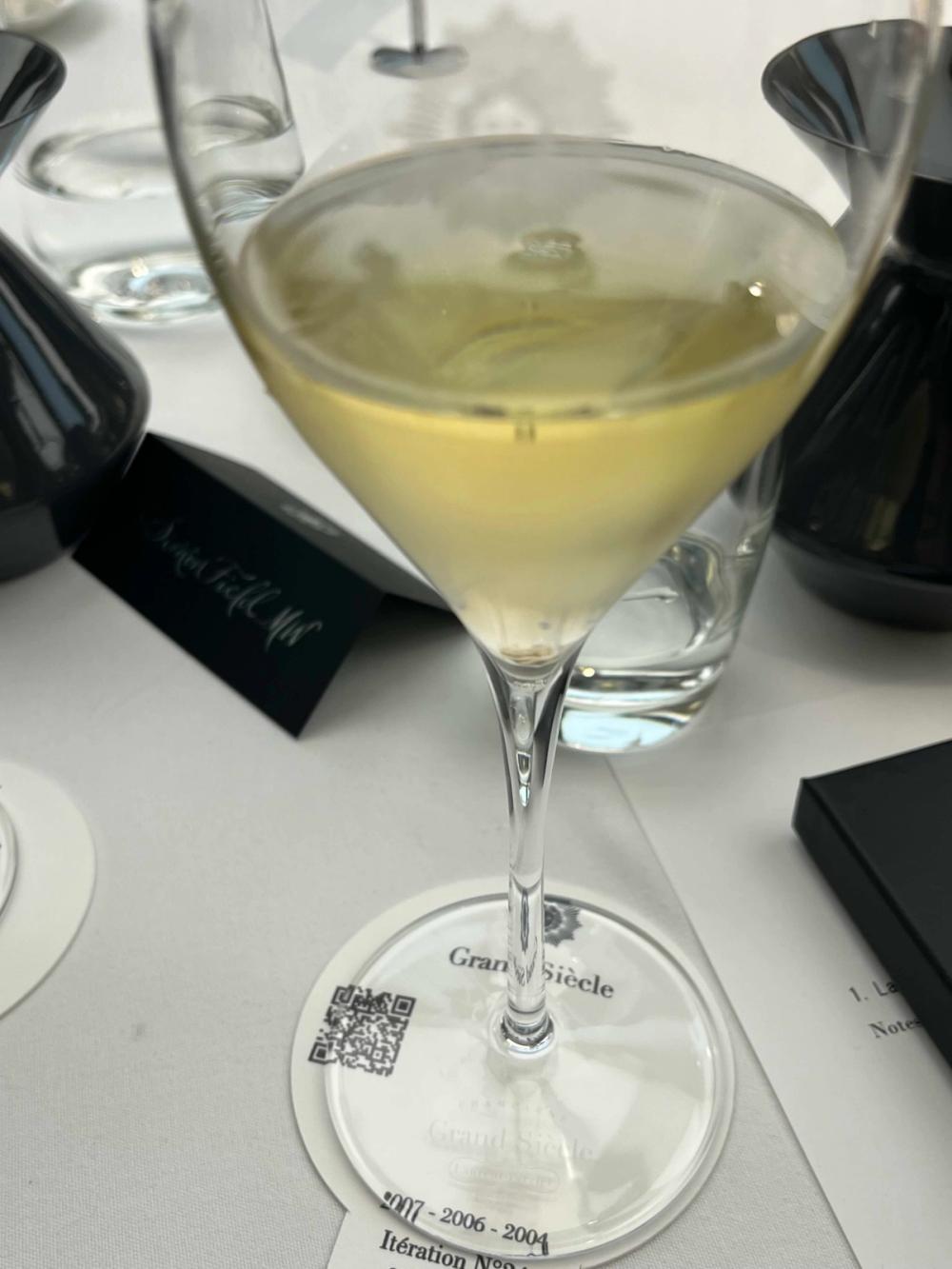
First taste of the new Laurent Perrier Héritage
The wine shadows the Grand Siècle blending principles, but with a broader survey of the Champagne landscape. Therefore it is to be multi-vintage (four vintages in the case of the debut, but with no requirement to remain thus), therefore it marginally favours Chardonnay ( 55%) and is focused on key villages, but in this instance sourced more widely, with 40 villages involved, their provenance stretching from the great villages of the Montagne (including Ambonnay and Bouzy) all the way down to the Aube region, with wines added from Sézanne and Les Riceys, inter alia. A far border palette, therefore, and aged on its lees for less time, given that the quartet of vintages in play are 2014, 2016, 2018 and 2019, the first two contributing freshness and structure according to Michel, the latter two ripeness and finesse. The Héritage (as with the current Grand Siècle) is dosed at 6 g/l and was disgorged in June 2023.
A worthy addition to the portfolio, therefore, and a strong ambassador for the Laurent-Perrier style, essentially reductive and focusing on elegance and the complexity that is born from reserve wines. We are not told whether future releases of Héritage will be segregated by release, as the Iterations have been for Grand Siècle since 2019. Exciting times, then, for a House that has always been innovative and which unfailingly, despite its size, attends to the details with imagination, skill and familial diligence. Michel, for his part, may have joined Laurent-Perrier in 1973, but shows little sign of slowing down. This is a “life’s métier” he jokes with Stéphane, adding that “practice makes perfect”. On the evidence of this excellent launch, it is very hard to disagree with such a statement!
So how were the new wines tasting?
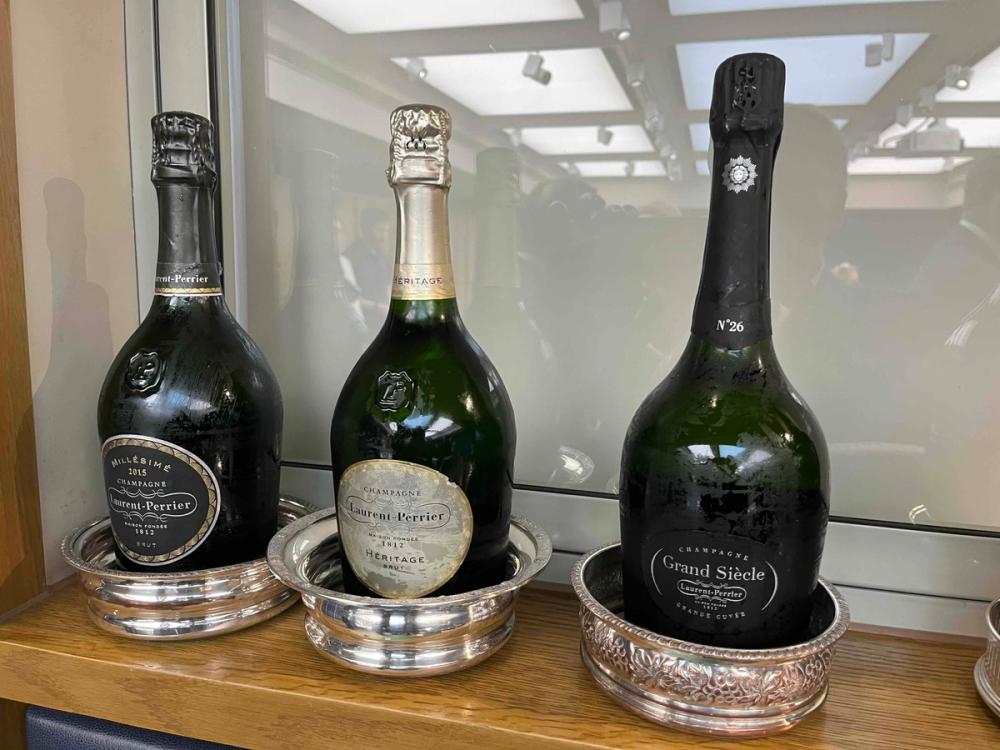
The purpose of the tasting is to mark the launch of the new wine, the Héritage, the release of the latest Grand Siècle Iteration N°24 in magnum, and to compare them with the current bottle release of Grand Siècle Iteration N°26 and, for good measure, the current vintage, the 2015.
Laurent-Perrier Brut Millésimé 2015
50 PN 50 CH, 8 g/l Dos, Dis 5/23
A somewhat turbulent year, according to Michel, with Pinot Noir generally in the ascendant. So it proves with the wine, which is therefore relatively atypical in a House which favours Chardonnay. Pale gold, with a persistent mousse and generous aromatic dominated by hawthorn, red berries and almonds. The power is maintained on the palate, which is especially assertive at the front of the mouth, the pleasing interface between the citric core and a muscular balustrade not lacking for tension or the capacity to evolve.
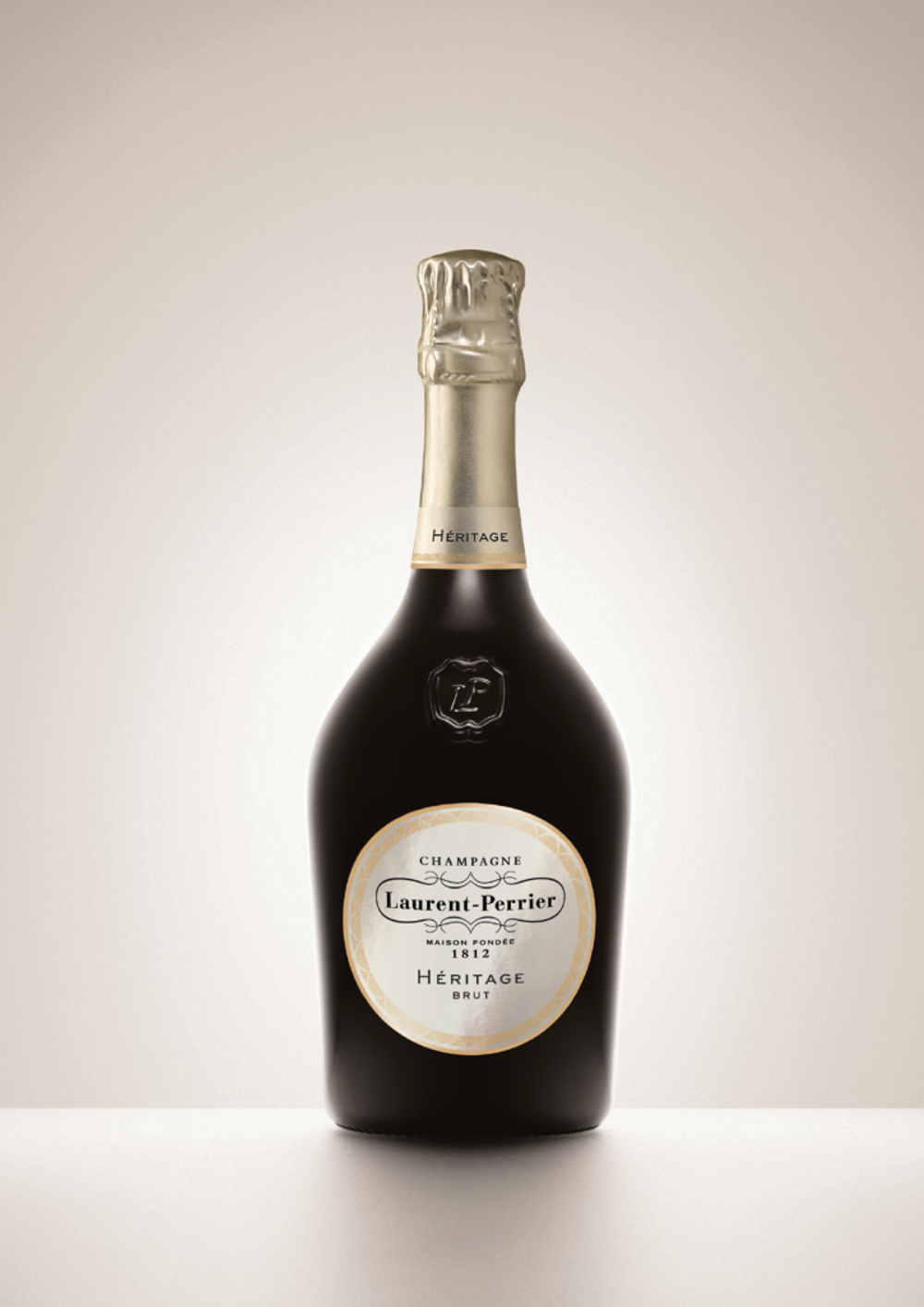
Laurent-Perrier Héritage MV (2019, 2018, 2016, 2014)
55 CH 45 PN, 6 g/l Dos, Dis 12/23
A strong début from the Héritage, its role described by Michel as a ‘stepping stone’ to the Grand Siècle and executed with precision and a degree of elegance, the 40 reserve wines all playing their part in the ensemble, which is fresher and more exuberant than its senior sibling yet does not lack for complexity and dextrous weave. Notes of white peach and honeysuckle garland a richly allusive palate, which is both zesty and supremely composed. Hints of sour honey and quince and nougat, then a long, satisfying finish. A worthy addition to the LP canon.
Grand Siècle Iteration N°26 MV (2012, 2008, 2007)
58 Ch 42 PN Dis 2/23
How do the ripe 2012 (65%) and the austere 2008 (25%) get on with one another, twelve years down the line? The ripe and flamboyant are held in check by the taut, the granitic, the linear. The panorama is fascinating, for sure, deep gold with nectarine, toast, plums and gingerbread all generous and expressive, with nothing amorphous or awkward. The linear discipline, courtesy of the 2008, buttresses the more gregarious inclinations of the 2012 efficiently and discretely. The 2007 adds colour, contours and nuance. As a result, the ensemble is both calm and exciting, joyful and dignified; the tension thus captured expertly echoing Bernard de Nonancourt’s guiding principles. The structure therefore underwrites the potential to improve yet further. A most impressive iteration of Iteration!
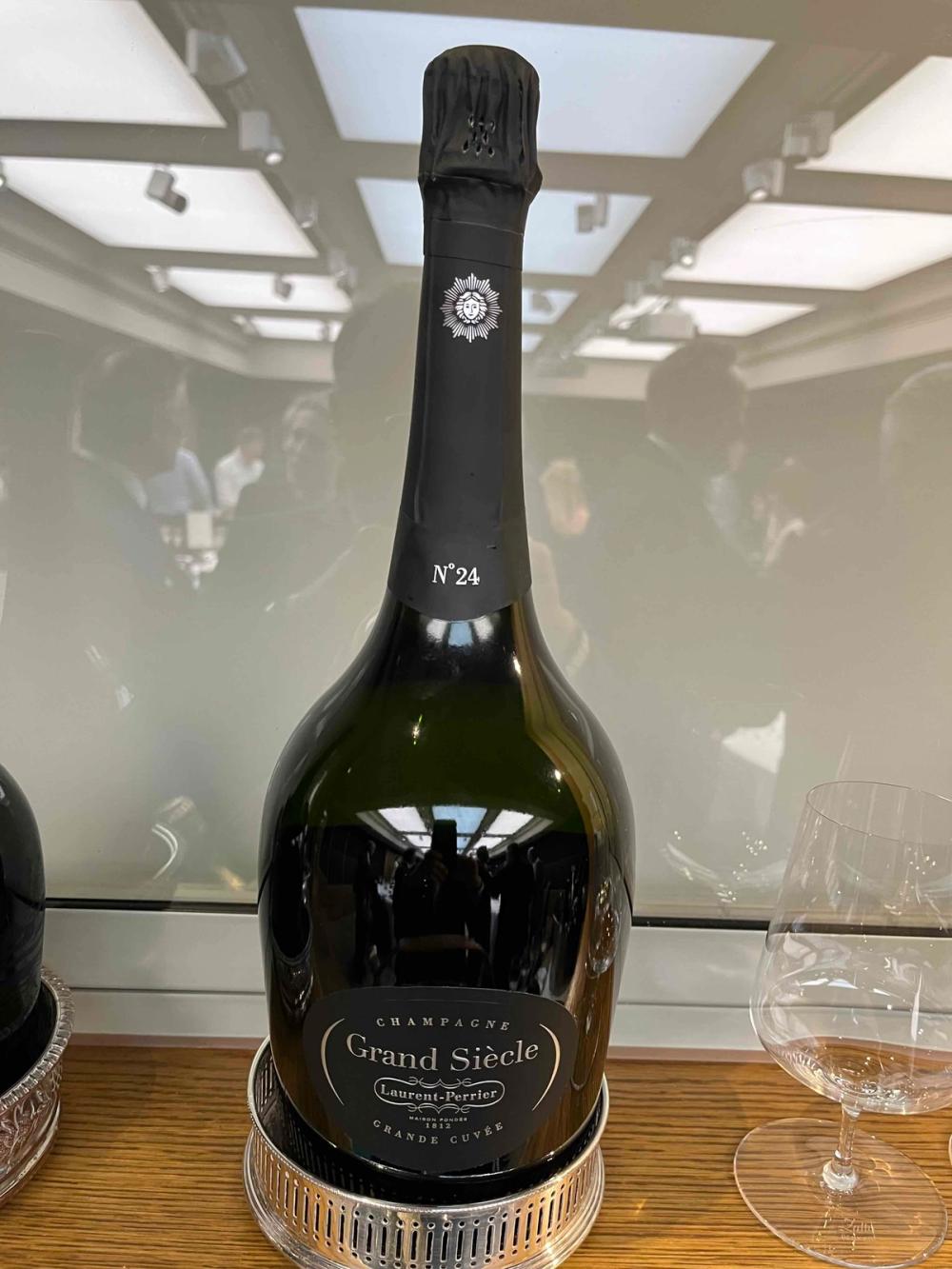
Grand Siècle Iteration N°24 in Magnum MV (2007, 2006, 2004)
58 Ch 42 PN 7 g/l Dos, Dis 4/23
An object lesson in the difference between bottle and magnum releases, with a little more time for reflection on the lees for the latter. The Iteration N°24 bottle, which I have tasted several times, plays on the ripe and generous character of 2007 and digs deep into the resourceful 2004 (a great Chardonnay year) and is profound of hue and evolved of personality. The magnum is far more restrained, its gold paler yet bright, its flavours still primary, tense, alert and bristling with potential. A shard of bright acidity runs through the ensemble, highlighting the inherent complexity which comes courtesy of the notes of sour honey, yellow plum and hazelnut. Michel detects flecks of Viennese pastry, its generosity held in check by a flinty grip, petrichor even. A superb statement of high-quality Chardonnay-dominated Champagne, just getting into its stride.
Laurent-Perrier is a commercial partner of The Buyer. To discover more about them click here.

